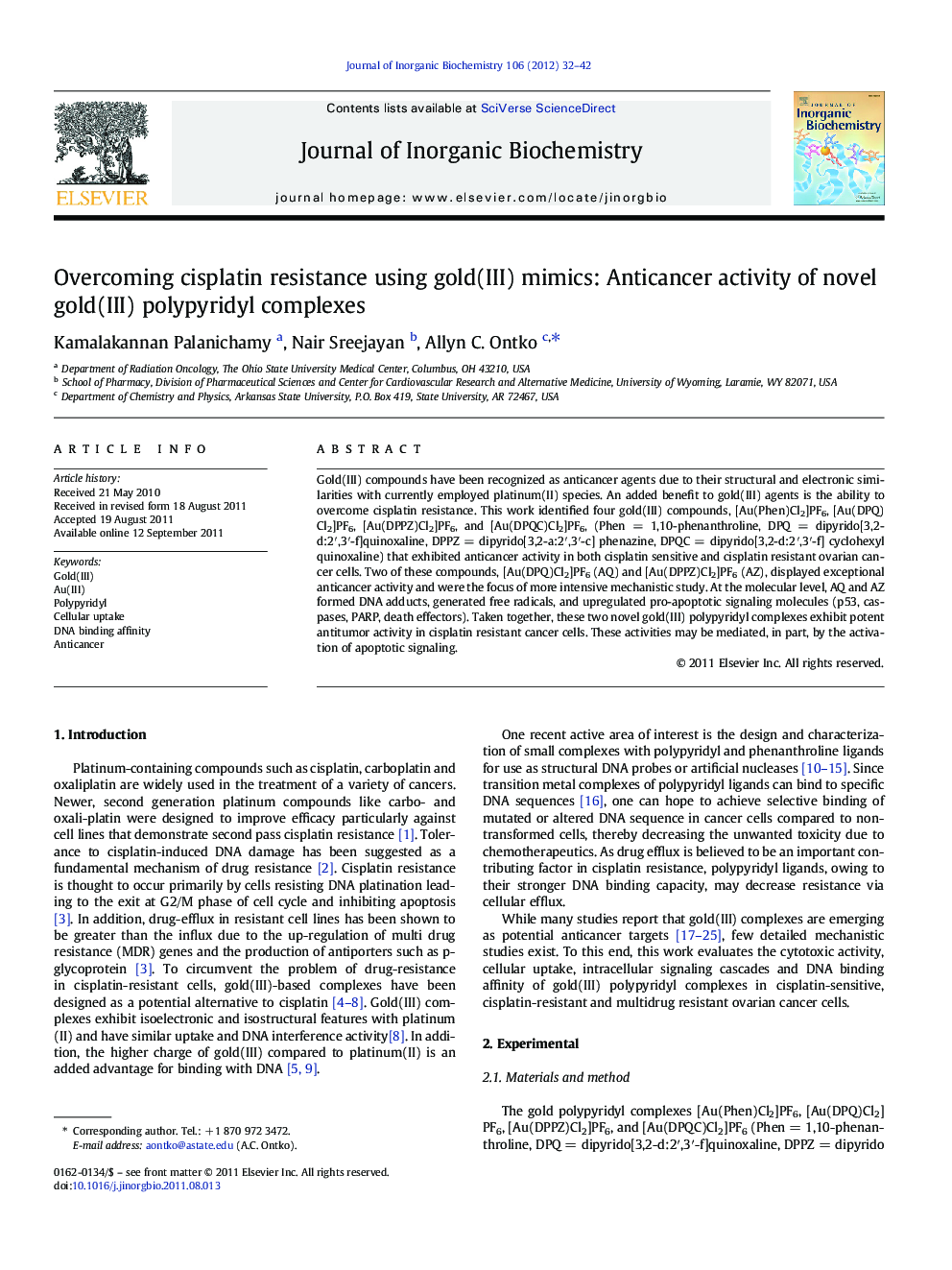| Article ID | Journal | Published Year | Pages | File Type |
|---|---|---|---|---|
| 1317848 | Journal of Inorganic Biochemistry | 2012 | 11 Pages |
Gold(III) compounds have been recognized as anticancer agents due to their structural and electronic similarities with currently employed platinum(II) species. An added benefit to gold(III) agents is the ability to overcome cisplatin resistance. This work identified four gold(III) compounds, [Au(Phen)Cl2]PF6, [Au(DPQ)Cl2]PF6, [Au(DPPZ)Cl2]PF6, and [Au(DPQC)Cl2]PF6, (Phen = 1,10-phenanthroline, DPQ = dipyrido[3,2-d:2′,3′-f]quinoxaline, DPPZ = dipyrido[3,2-a:2′,3′-c] phenazine, DPQC = dipyrido[3,2-d:2′,3′-f] cyclohexyl quinoxaline) that exhibited anticancer activity in both cisplatin sensitive and cisplatin resistant ovarian cancer cells. Two of these compounds, [Au(DPQ)Cl2]PF6 (AQ) and [Au(DPPZ)Cl2]PF6 (AZ), displayed exceptional anticancer activity and were the focus of more intensive mechanistic study. At the molecular level, AQ and AZ formed DNA adducts, generated free radicals, and upregulated pro-apoptotic signaling molecules (p53, caspases, PARP, death effectors). Taken together, these two novel gold(III) polypyridyl complexes exhibit potent antitumor activity in cisplatin resistant cancer cells. These activities may be mediated, in part, by the activation of apoptotic signaling.
Graphical abstractThis work identified two gold(III) polypyridyl compounds [Au(DPQ)Cl2]PF6 (AQ) and [Au(DPPZ)Cl2]PF6 (AZ), with anticancer activity that were also able to overcome cisplatin resistance. At the molecular level, AQ and AZ formed DNA adducts, generated free radicals, and upregulated pro-apoptotic signaling molecules (p53, caspases, PARP, death effectors).Figure optionsDownload full-size imageDownload as PowerPoint slide
